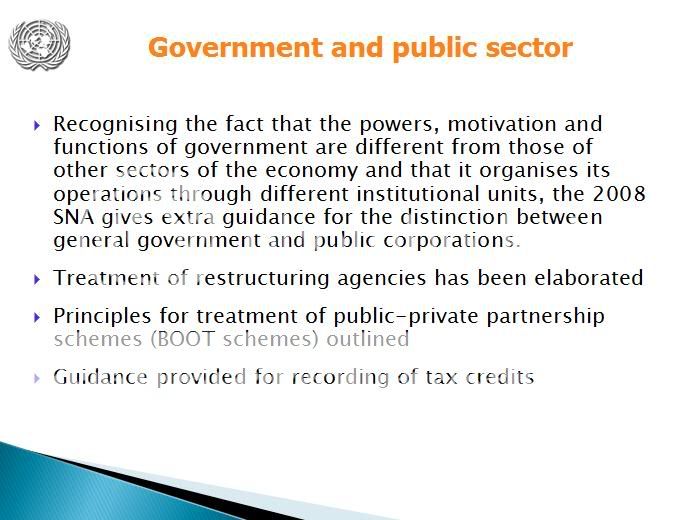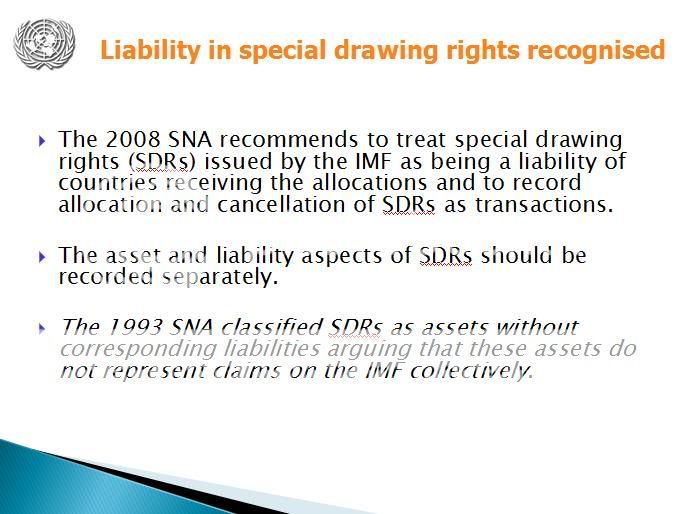SDRs, PPPs, the IMF, UN and World Bank
In the first installment of The Global Agenda: Privatizing the Planet, I attempted to establish the suggestion of the underlying foundation and causation for Public-Private Partnerships (PPP), that being debt financing, which propagates debt trading, debt swaps and various and sundry securitizations and securitized financial instruments.
Within this post, I shall attempt to establish the connection between the IMF's Special Drawing Rights (SDR), the creation of debt and those private-public partnerships as debt-affiliated vehicles which are a major force in the privatization of everything.
Admittedly, these connections may appear tenuous to some, but it is definite food for thought.
Exhibit 1
From an International Monetary Fund (IMF) report, dated March of 2006:
63. Public/ private partnerships (PPPs) are currently not covered in statistical guidelines. At the January/February 2006 meeting, the AEG agreed that the PPPs are sufficiently important to be described in the revised SNA. It also agreed that a list of indicators would be useful to help determine the economic owner of the fixed assets associated with a PPP but that it was necessary to examine arrangements on a case-by-case basis. An annex on PPP will be included in the SNA, with an understanding to keep abreast of developments in international accounting standards.[1]
Exhibit 2
Several years later we observe changes in the SNA guidelines (from the United Nations Statistics Division) thusly:
[G-1]
Please note that the SDRs, in their revised definition, are now considered to be liabilities (debt).
[G-2]
I've included this second slide as it simply looks interesting:
[G-3]
Exhibit 3
From an IMF document for Albania (please note the SDR comment):
The Executive Board of the International Monetary Fund (IMF) today completed the third review of Albania's economic performance and financing assurances under the three-year Poverty Reduction and Growth Facility (PRGF) arrangement and the Extended Fund Facility (EFF) arrangement. The completion of the reviews enables the release of an amount equivalent to SDR 2.4 million (about US$3.7 million), which will bring the total disbursements to Albania under both arrangements to SDR 9.7 million (about US$14.8 million).
And from the same report, please note the (careful) usage of public-private partnership.
"Significant structural reforms, particularly for promoting private sector involvement in key sectors, are progressing, and sustained efforts are being made to improve public institutions. A general directorate for debt management has been created in the Ministry of Finance to ensure effective implementation of the new debt strategy, and a credit information bureau will become operational later this year. The national telecommunication company Albtelecom has been privatized, and the authorities are committed to privatization in other strategic sectors. The strong interest from foreign investors in Albania is welcome. Large Public-Private Partnership projects with sophisticated financing structures should, however, be treated carefully and the capacity to assess and manage the risks involved in such projects needs to be built," Mr. Portugal said.[2]
Exhibit 4
Next, we see the memorandum of understanding between the European Community and Latvia. Again, please note the usage of SDRs.
On 20 January 2009 the Council of the European Union adopted a decision to make available to Latvia medium-term financial assistance of up to EUR 3.1 billion, with a maximum average maturity of seven years. Community assistance should be provided in conjunction with a loan from the International Monetary Fund of SDR 1.5 billion (1200% of Latvia's IMF quota, around EUR 1.7 billion) under an IMF Stand-by arrangement approved on 23 December 2008.
And, of course, that verbiage on public-private partnerships is definitely mandatory. From that same memorandum below.
Enactment of a Law on Public Private Partnership (PPP) consistent with the IMF and EU recommendations. A Law on PPP is to be adopted prior to undertaking any large PPP infrastructure projects additional to those initiated by end-2008.[3]
Exhibit 5
Now, around the time the IMF is talking about the increased necessity of increasing Special Drawing Rights (SDRs, or the IMF's personal financial instrument of debt), we find this letter from the Bretton Woods Committee to the US Congress, urging the speedy contribution of the USA to the IMF's funding.
And the signature page (page 2):
[G-4]
Sure seems like some very logical inferences could be made here as to the use of SDRs to generate the requisite debt instruments for those public-private partnerships to come, which will then generate evermore debt, while concurrently further privatizing the assets of the targeted country.
Very interesting....very, very interesting.
Exhibit 6
And lastly, something from the World Bank's big book of convention financial instruments and mechanisms.
Public-Private-Partnerships (PPP)
A public-private partnership (PPP) involves the private sector in aspects of the provision of infrastructure and services that have traditionally been provided by the government.46 Private companies finance projects and provide expertise to ease fiscal constraints and increase efficiency. By engaging the private sector and giving it defined responsibilities, governments broaden their options for delivering better services. The range of options for public-private partnerships has expanded enormously over the past 30 years. Agreements between public and private entities take many shapes and sizes for both new and existing services. At one end of the spectrum is a management or service contract, where a private company is paid a fee for a service. At the other end is full privatization or divestiture (outright sale), where a government sells assets to a private company. Outsourcing has become another popular option; here a private company might handle an aspect of service, such as billing, metering, transport, or even cleaning. Hybrid models of public-private partnership have seen explosive growth in recent years, especially with the development of a more diversified pool of emerging market investors and operators with local expertise. These models often rely on simpler contractual arrangements and blend public and private money to diversify risks.[4]
NOTES
- Dupuis, Jean-Pierre and Laliberte, Lucie. TASK FORCE ON HARMONIZATION OF PUBLIC SECTOR ACCOUNTING—FINAL REPORT. P. 20. March 8-10, 2006. (Hosted by the OECD)
http://imf.org/external/np/sta/tfhpsa/2006/03/pdf/030806a.pdf - International Monetary Fund. Press Release No. 07/153. July 9, 2007.
http://www.imf.org/external/np/sec/pr/2007/pr07153.htm - MEMORANDUM OF UNDERSTANDING between THE EUROPEAN COMMUNITY and THE REPUBLIC OF LATVIA. Pp. 2,9. 20 January 2009.
http://ec.europa.eu/latvija/documents/pievienotie_faili/29.01.09.mou.doc - World Bank. "Glossary of Selected Innovative and Conventional Financial Instruments and Mechanisms." P. 35. October 9, 2009.
http://www.fininnov.org/img/Glossary%20Innovative%20Financing%20October%...
GRAPHICS
G-1
http://unstats.un.org/unsd/nationalaccount/workshops/2009/india/AC186-5.PPT
G-2
http://unstats.un.org/unsd/nationalaccount/workshops/2009/india/AC186-5.PPT
G-3
http://unstats.un.org/unsd/nationalaccount/workshops/2009/india/AC186-5.PPT
G-4
http://www.brettonwoods.org/uploads/pages/224/Former%20Secretaries%20Let...






Comments
IMF and World Bank:
IMF and World Bank: relentlessly making wage slaves of the Earth's population
It's called global Corporate Fascism
One more proof of the proliferation of global Corporate Fascism.
http://letthemfail.us/archives/3972
-WM
http://letthemfail.us
-WM
http://letthemfail.us
Citi doing a CLO check this out James
Shadow economy back, Citi prices $525M CLO.
This may help you coalesce
This may help you coalesce those connections:
http://www.mediafreedominternational.org/2010/04/08/the-bilderberg-group...